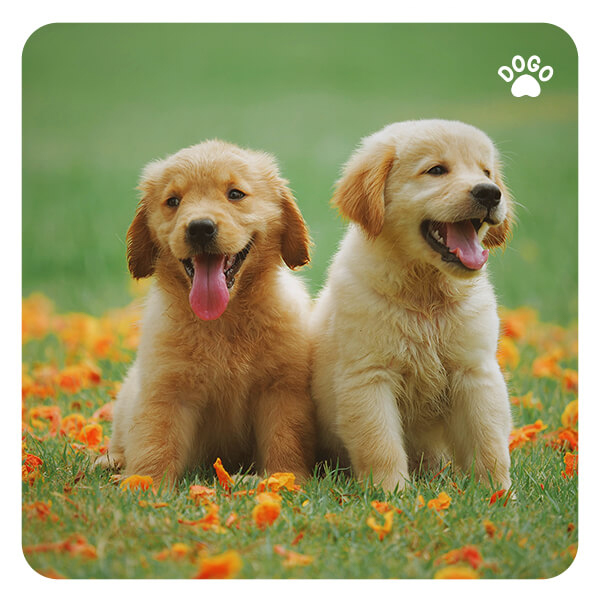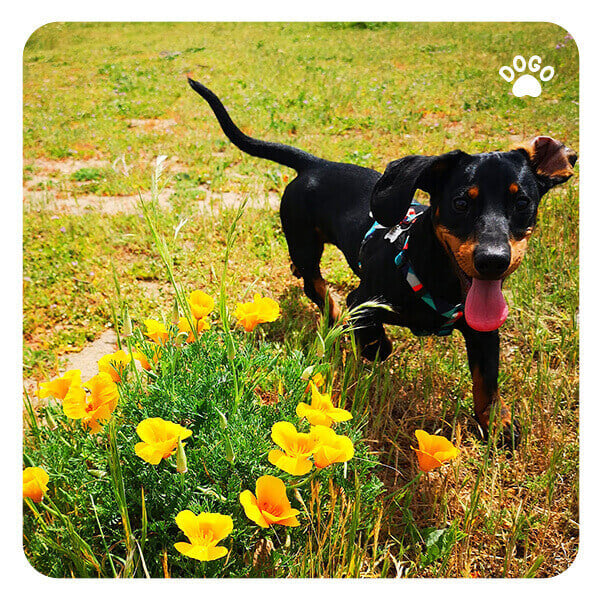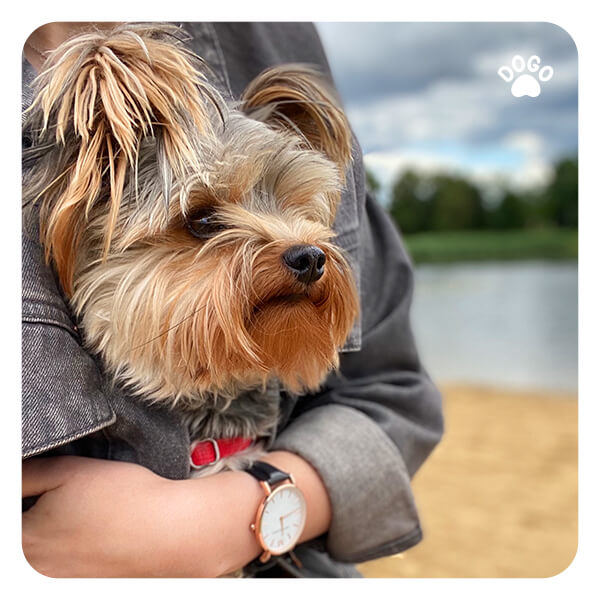When and How to Socialize Your Puppy?
Post Date:
November 12, 2023
(Date Last Modified: November 13, 2025)
Practical timing, safe exposure, and consistent handling are core considerations when socializing a puppy. Below are structured recommendations for when and how to introduce puppies safely to people, animals, places, and routines.
Why socialization matters
Early social exposure shapes how a dog interprets people, other animals, and novel situations later in life. Positive early experiences support easier training, smoother household interactions, and better welfare by reducing chronic stress responses over time.
Missed or inconsistent socialization is commonly implicated in long-term fearfulness, reactivity, and problem behaviors that can be difficult and time-consuming to change once patterns are established.
Sensitive periods and timing
The primary socialization window is approximately 3–14 weeks of age, when most puppies learn fastest from controlled experiences and form lasting responses to people, animals, and environments [1].
Within that period, many trainers recommend multiple brief exposures of about 5–10 minutes per interaction to prevent overstimulation while building positive associations [2].
After about 14 weeks there are later sensitive phases for fear and resource guarding that can reopen learning opportunities, but changes typically require more gradual, systematic desensitization compared with the early window [1].
| Age range | Key goals | Typical session length |
|---|---|---|
| 0–3 weeks | Comfort with littermates and gentle handling | Very short, passive handling |
| 3–7 weeks | Exposure to calm people and novel textures | 1–5 minutes |
| 7–14 weeks | Controlled meetings with vaccinated dogs, varied places | 5–10 minutes |
| 14+ weeks | Strengthen recall, reduce fear responses | Short, frequent practice |
Health, vaccinations, and safety considerations
Core vaccine series for puppies are usually scheduled so that primary protection is in place by about 16 weeks of age; until that point, veterinarians balance the benefits of social exposure with infectious-disease risk when advising owners [3].
A common practical approach is to minimize contact with unknown dogs in high-risk places (for example, public dog parks) until the puppy has completed its core vaccine series or a veterinarian indicates adequate protection [3].
Routine parasite prevention and good hygiene—regular deworming as recommended and cleaning bedding with appropriate detergents—reduce disease transmission during socialization efforts [3].
When deciding whether to allow a specific outing, weigh the likely behavioral benefit versus the infection risk for that environment; lower-risk options include controlled meetings at a trainer’s facility or introductions at a vaccinated friend’s home [3].
Preparing you and your home
Owner preparation ensures exposures are consistently positive. Before introducing novel people or places, practice basic handling and simple cues in a quiet area so the puppy learns to accept touch and follow brief requests.
- Adopt a calm, patient mindset and plan short daily sessions.
- Set up a predictable routine for meals, play, and rest.
- Designate a safe space such as a crate or quiet room for breaks.
- Choose a properly fitting flat harness and a secure crate sized for the puppy.
- Keep treats handy and pre-practice gentle handling for grooming and vet exams.
Practice basic handling for 2–3 minutes, three to five times daily so that touch around the mouth, paws, ears, and body becomes normal and predictable for the puppy [4].
Introducing people and handling
Gradual, positive introductions reduce the chance of fear. Aim to introduce puppies to a variety of people during the sensitive window; a commonly used practical target is exposure to roughly 10 or more calm, different adults and children in controlled situations [5].
Begin with non-threatening postures (kneeling, soft voice) and pair each new person with high-value treats or a favorite toy so the puppy learns to approach strangers expecting reward [5].
Supervised child interactions should be brief and always seated; teach children to offer a hand for sniffing and to avoid hugging, sudden reaching, or chasing behaviors that can produce fear responses in puppies [5].
Introducing dogs and other animals
Choose calm, well-socialized play partners for initial dog introductions; start with 1–2 adult dogs that have reliable manners and are vaccinated, and perform meetings on-leash with loose tension to allow controlled approach [5].
Watch body language closely: relaxed posture, play bows, and short reciprocal bouts suggest healthy interaction, while stiff bodies, prolonged staring, or repeated mounting can indicate miscommunication and the need to separate [5].
For other species, introduce under professional guidance if possible; many species show different tolerance levels, so follow species-specific safety and welfare recommendations from veterinary professionals [1].
Exposing to places, sounds, objects and routines
Systematic, low-intensity exposure helps puppies generalize confidence. Start with quiet, low-distraction versions of a place and gradually increase complexity over a period such as 3–4 weeks, monitoring for stress signals at each step [2].
For specific noises, begin at a low volume or distance and pair the sound with food or play; for example, play a recorded vacuum sound softly while offering treats, then slowly increase intensity across sessions [2].
Car and grooming acclimation should follow the same graded plan: short stationary sessions in the car, then short drives, and progressively longer grooming handling with rewards for calm behavior [2].
Positive methods, training tools and session design
Use reward-based, force-free techniques that reinforce approach and calm responses; timing is critical—deliver a treat or marker within one second of the desired response to strengthen learning [3].
Short, frequent sessions work best: aim for roughly 3–5 minutes per focused training bout and plan multiple sessions across the day so learning is distributed and less likely to produce fatigue [3].
Tools such as clickers, target sticks, and high-value toys can speed shaping; fade rewards slowly as behaviors become reliable so the puppy learns to respond under varied circumstances [3].
Detecting stress, managing setbacks, and when to seek help
Learn common stress signals—subtle signs include lip licking, yawning, and quick body freezes, whereas escalation to growling, snapping, or persistent hiding indicate the puppy is overloaded and needs the interaction ended immediately [4].
If a puppy continues to show avoidance or anxiety for more than 5 minutes during a planned exposure, stop the session, provide a safe space, and return later to a lower-intensity step in the plan [4].
Use counter-conditioning (pairing the feared stimulus with pleasant outcomes) and graduated exposure plans under a stepwise protocol; consult a qualified trainer or certified behaviorist if fear responses are severe, persistent, or include aggressive actions [4].
Seek veterinary input when behavior changes coincide with illness, pain, or sudden environmental change, as medical issues can underlie abrupt onset of fear or aggression [3].
Long-term maintenance and booster socialization
Socialization is not a one-time activity but an ongoing process that benefits from scheduled reinforcement throughout juvenile development and into adulthood.
Plan for at least 10–15 minutes of targeted social exposures per day during the juvenile months, gradually shifting to 20–30 minutes total per week of maintenance exposures once adult thresholds are reached [2].
For dogs that experienced limited early exposure, a structured booster program of 2–3 controlled sessions per week over 6–8 weeks can help rebuild confidence when paired with reward-based counter-conditioning [5].
Measuring progress and record-keeping
Use simple logs to track exposures: record the stimulus, duration, and the puppy’s peak response; aim for progressive reduction in stress signals across roughly 3–6 repeat exposures per stimulus before increasing intensity [4].
Objective measures help: count approach attempts, time spent within one body length of the stimulus, and number of voluntary interactions; improvements of 30–50% in approach frequency across sessions indicate meaningful progress for many puppies [1].
Troubleshooting common setbacks
If a puppy freezes, retreats, or shows repeated avoidance for more than 2 sessions with the same stimulus, step back to a lower-intensity version of the exposure and extend the number of repetitions by 50–100% relative to your prior plan [4].
When progress stalls, reduce session length to 60–75% of the previous duration and increase reward value (for example, switching from kibble to small pieces of cooked chicken) while keeping sessions frequent—aim for 3–6 short repetitions per day at the reduced intensity [5].
When to involve professionals
Consult a certified trainer or veterinary behaviorist when fear-based responses persist beyond 8–12 weeks of consistent, properly applied desensitization and counter-conditioning, or sooner if aggressive behaviors (growling, snapping, or biting) appear [4].
If medical causes are suspected—for instance, sudden onset of fear, avoidance of previously accepted handling, or pain-associated behavior—seek veterinary assessment within 48–72 hours to rule out treatable conditions [3].
Practical examples of progressive exposure
For a noise-sensitive puppy, a graded protocol might begin with 30–60 second low-volume playback of the sound paired with treats, repeated 5–10 times across a session, then progressively increase duration or volume by roughly 10–20% per successful session over several weeks [2].
For social introductions, a three-step plan—visual distance first, on-leash calm approach second, and off-leash supervised play third—can be spaced over 2–4 sessions per week with at least 48 hours between higher-intensity steps for recovery and consolidation [5].
Managing shared households and multiple caregivers
Consistency across handlers matters: instruct all caregivers to use the same cue words and reward types; a short 5-minute daily coordination meeting or message detailing cues and rationing of high-value treats helps maintain uniform reinforcement across 2–6 household members [1].
Use written or app-based logs so each caregiver can note the puppy’s reactions; review entries weekly and adjust exposures or rewards if more than two caregivers report increased avoidance or stress on the same stimulus [4].
Scaling socialization for different breeds and temperaments
Some breeds and individual temperaments require slower progression; reduce step size to 25–50% of the standard plan for highly reactive or easily stressed puppies and expect 1.5–3 times the number of repetitions before generalization to novel contexts [1].
When working with shy or cautious lines, favor more supervised, on-leash, and owner-guided exposures during the 7–14 week peak window and continue maintenance sessions at least weekly through 6 months of age [5].
Thoughtful, incremental exposure combined with health-conscious planning and consistent reward-based reinforcement gives most puppies the best chance to grow into confident adult dogs without compromising safety or welfare.
Sources
- merckvetmanual.org — clinical and developmental overviews for canine socialization and behavior.
- avma.org — veterinary guidance on puppy exposure and public-health considerations.
- aaha.org — vaccination and preventive care recommendations relevant to socialization timing.
- wsava.org — international resources on handling, welfare, and behavior management.
- vca.com — practical introductions, signs of stress, and safe meeting techniques.






